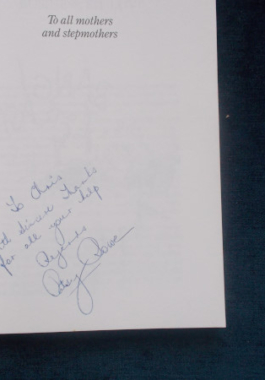-
 The sequel to Abbie. The further outrageous, funny and entirely credible adventures of Lady Abbott-Acland (and her best friend Maud) - the prototype of all impossible female relations. Abbie can cause a peculiar gut-guilt reaction; since most of us have done - or wish we'd done - some of the appallingly brazen things that she gets away with! And she is still observed with clear-sighted affection by her long-suffering nephew, and revealed through her copious letters from unlikely addresses and erroneous headings.
The sequel to Abbie. The further outrageous, funny and entirely credible adventures of Lady Abbott-Acland (and her best friend Maud) - the prototype of all impossible female relations. Abbie can cause a peculiar gut-guilt reaction; since most of us have done - or wish we'd done - some of the appallingly brazen things that she gets away with! And she is still observed with clear-sighted affection by her long-suffering nephew, and revealed through her copious letters from unlikely addresses and erroneous headings. -
 Erich von Daniken undertakes to prove that in prehistoric and early historic times the Earth was visited by unknown beings from the Cosmos; that these extra-terrestrials created human intelligence by a deliberate genetic mutation; that the extra-terrestrials ennobled hominids 'in their own image'; that these visitors to Earth were recorded and handed down in various religions, mythologies and popular legends; and that in some places, the extra-terrestrials left physical evidence of their presence on Earth. He draws his evidence from all over the world: from the Turkish mountains where carved monoliths and giant stone heads mysteriously survive the centuries; to the secret caves of Ecuador, where treasured remnants of a bygone era remain hidden; to equatorial Africa, where the 'primitive' Dogon have been familiar for centuries with the complex movements of Sirius, a star only discovered by western astronomers since the invention of the radio telescope. He searches the ancient documents of the Hindus, the Jews and the Christians; examines religions, mythologies and legends and fins a recurring theme of 'human' gods, heavenly chariots, 'space suits', floods and disasters. The evidence is largely circumstantial - but he challenges all comers to produce an interpretation that better fits the facts. Illustrated with black and white photographs.
Erich von Daniken undertakes to prove that in prehistoric and early historic times the Earth was visited by unknown beings from the Cosmos; that these extra-terrestrials created human intelligence by a deliberate genetic mutation; that the extra-terrestrials ennobled hominids 'in their own image'; that these visitors to Earth were recorded and handed down in various religions, mythologies and popular legends; and that in some places, the extra-terrestrials left physical evidence of their presence on Earth. He draws his evidence from all over the world: from the Turkish mountains where carved monoliths and giant stone heads mysteriously survive the centuries; to the secret caves of Ecuador, where treasured remnants of a bygone era remain hidden; to equatorial Africa, where the 'primitive' Dogon have been familiar for centuries with the complex movements of Sirius, a star only discovered by western astronomers since the invention of the radio telescope. He searches the ancient documents of the Hindus, the Jews and the Christians; examines religions, mythologies and legends and fins a recurring theme of 'human' gods, heavenly chariots, 'space suits', floods and disasters. The evidence is largely circumstantial - but he challenges all comers to produce an interpretation that better fits the facts. Illustrated with black and white photographs. -
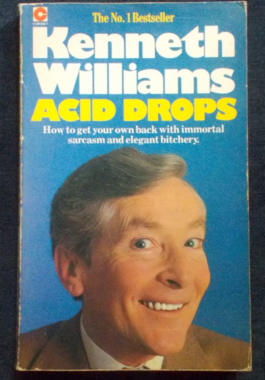 Kenneth Williams, star of stage, radio, screen and Carry On put together a collection of witty, wicked put-downs, retorts, comebacks - and all those great responses we never think of at the time! These have been collected from far and wide across the world of film, literature, politics and celebrity. From Dorothy Parker, observing a notorious society flirt: That woman can speak eighteen languages and can;t say 'No' in any of them. Or Groucho Marx, to a delighted author: From the moment I picked up your book until I put it down, I was convulsed with laughter...some day I intend to read it... After W.C. Fields made his feelings about children widely known, he was asked how he really liked children: His response? "Boiled or fried..." Illustrated by ffolkes.
Kenneth Williams, star of stage, radio, screen and Carry On put together a collection of witty, wicked put-downs, retorts, comebacks - and all those great responses we never think of at the time! These have been collected from far and wide across the world of film, literature, politics and celebrity. From Dorothy Parker, observing a notorious society flirt: That woman can speak eighteen languages and can;t say 'No' in any of them. Or Groucho Marx, to a delighted author: From the moment I picked up your book until I put it down, I was convulsed with laughter...some day I intend to read it... After W.C. Fields made his feelings about children widely known, he was asked how he really liked children: His response? "Boiled or fried..." Illustrated by ffolkes. -
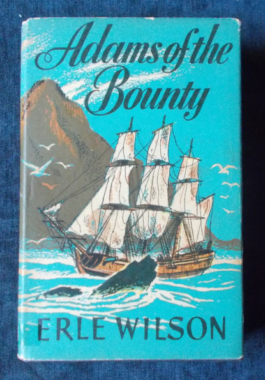 A novel based on historical fact, it tells the complete story of the part played in the Bounty mutiny by the man known as Alexander Smith - real name John Adams - his subsequent fate and that of the eight other mutineers together with their Maori women and friends who finally sailed from Tahiti in the Bounty in search of a secret sanctuary. The book offers adventure and excitement as well as the idea that the popular legend of Fletcher Christian as a hero and liberator and Bligh being branded as a bullying, inhuman monster may not be accurate; far from being an apologia for Bligh, it presents a logical, commonsense view of events that have intrigued historians since Bligh's first dispatches from Timor reached London. Cover art by Frank Norton.
A novel based on historical fact, it tells the complete story of the part played in the Bounty mutiny by the man known as Alexander Smith - real name John Adams - his subsequent fate and that of the eight other mutineers together with their Maori women and friends who finally sailed from Tahiti in the Bounty in search of a secret sanctuary. The book offers adventure and excitement as well as the idea that the popular legend of Fletcher Christian as a hero and liberator and Bligh being branded as a bullying, inhuman monster may not be accurate; far from being an apologia for Bligh, it presents a logical, commonsense view of events that have intrigued historians since Bligh's first dispatches from Timor reached London. Cover art by Frank Norton. -
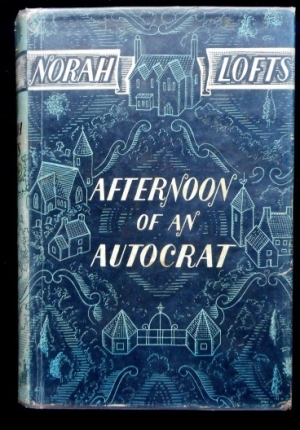 Sir Charles Augustus Shelmadine was an autocrat. He ruled his village with a firm but kindly hand - instructing his tenants on their crops, their children and their love affairs. And when he died and the new Squire came, the village stirred uneasily. For the new Squire had strange ideas - and even stranger friends - friends like Mr. Mundford who never seemed to grow any older and whose name was linked with the terrible Hell Fire Club. And Mr. Mundford was interested in too many things that should not have concerned him... like the ruins of the old Roman temple... and what happened in the village on All-Hallow's Night...and in the silent, amber-eyed young woman called Damask Greenaway.
Sir Charles Augustus Shelmadine was an autocrat. He ruled his village with a firm but kindly hand - instructing his tenants on their crops, their children and their love affairs. And when he died and the new Squire came, the village stirred uneasily. For the new Squire had strange ideas - and even stranger friends - friends like Mr. Mundford who never seemed to grow any older and whose name was linked with the terrible Hell Fire Club. And Mr. Mundford was interested in too many things that should not have concerned him... like the ruins of the old Roman temple... and what happened in the village on All-Hallow's Night...and in the silent, amber-eyed young woman called Damask Greenaway. -

Being the Chronicle of the Wars of Montrose as Seen By Martin Somers, Adjutant of Women in O'Cahan's Regiment. Surgeon and adjutant of women in O'Cahan's Irish regiment, warring in Scotland with Montrose, is Martin Somers, better exponent of swordplay than of surgery. In his adventurous wardship of this ill-fated company of women, in the strengthening of the line against the forces of the Covenant, his dexterity and toughness is often decisive. This is a tale of keen endeavour, fury and tenderness. Also published as The Dark Rose.
-

The North had Rock Island - the South had Andersonville. The names of both of these prisons, during the American Civil War, struck horror into the hearts of those on both sides. The scene of human depravity is both inside and outside the stockade; death stalks life; the strong prey on the weak; humanity is redefined without redemption; indifference replaces humanity. Yet not all humanity is lost. This Pulitzer Prize-winning novel, prepared over 25 years of research and investigation and acclaimed as one of the finest Civil War stories since Gone With The Wind, does not only look at the prison camp, but at the lives of those it touched - weaving a story which is regarded as deeply disturbing, moving, grotesque, beautiful, brutal and comic. Regarded as an excellent companion book to GWTW.
-
 Subtitled Being a Series of Bouquets Diffidently Distributed. Nichols interviews the luminaries of his day from the world of art, literature and music. Each chapter describes his interview or friendship and leaves an outline, an impression, of his subject: Noel Coward; Arthur Conan Doyle; George Gershwin; Eugene Goossens; W. Somerset Maugham; Dame Nellie Melba; Aldous Huxley; H.G. Wells - and more - and... were they the same when at home?
Subtitled Being a Series of Bouquets Diffidently Distributed. Nichols interviews the luminaries of his day from the world of art, literature and music. Each chapter describes his interview or friendship and leaves an outline, an impression, of his subject: Noel Coward; Arthur Conan Doyle; George Gershwin; Eugene Goossens; W. Somerset Maugham; Dame Nellie Melba; Aldous Huxley; H.G. Wells - and more - and... were they the same when at home? -
 Are You Irish Or Normal? Sean O'Grada. O'Grada traces the history of the Irish in his own inimitable fashion, from many centuries B.C. (The First Irishman was a Greek) through the 9th, 10th and 11th centuries (A Man's Best Enemy is His Neighbour - And Where Was The O'Neill?) into the 15th and 16th centuries (A Good Sharp Axe Makes Divorce Permanent) and beyond. Now Listen, Mate! John O'Grady: O'Grady sez: These essays, or whatever they may be, represent my thoughts and conclusions on various things and people. My eldest son wanted me to write my autobiography: "The story of your life, Pop" he said. "And tell the truth." He can go and jump in Lake Burley Griffin. I offer instead some comment on what life has taught me. After sixty years of knocking around and being knocked about, a man acquires a sort of philosophy. Basically, mine is that nothing in life is worth getting steamed up about, and most things are good only for a laugh. Illustrated by Paul Rigby.
Are You Irish Or Normal? Sean O'Grada. O'Grada traces the history of the Irish in his own inimitable fashion, from many centuries B.C. (The First Irishman was a Greek) through the 9th, 10th and 11th centuries (A Man's Best Enemy is His Neighbour - And Where Was The O'Neill?) into the 15th and 16th centuries (A Good Sharp Axe Makes Divorce Permanent) and beyond. Now Listen, Mate! John O'Grady: O'Grady sez: These essays, or whatever they may be, represent my thoughts and conclusions on various things and people. My eldest son wanted me to write my autobiography: "The story of your life, Pop" he said. "And tell the truth." He can go and jump in Lake Burley Griffin. I offer instead some comment on what life has taught me. After sixty years of knocking around and being knocked about, a man acquires a sort of philosophy. Basically, mine is that nothing in life is worth getting steamed up about, and most things are good only for a laugh. Illustrated by Paul Rigby. -
 Welcome to the world of Art Handel, a world where the unexpected and expected often collide with the absolutely and totally unexpected and with little regard for each other. While it's sometimes nice to see how the other half live, this book gives you an insight into how the other half of that other half live. Described as 'dark and enlightening, horrific and hilarious...funny stuff emerges from the damndest places...like a clown with a razor blade...startling...original and darkly gleeful...think Stephen King on laughing gas...'
Welcome to the world of Art Handel, a world where the unexpected and expected often collide with the absolutely and totally unexpected and with little regard for each other. While it's sometimes nice to see how the other half live, this book gives you an insight into how the other half of that other half live. Described as 'dark and enlightening, horrific and hilarious...funny stuff emerges from the damndest places...like a clown with a razor blade...startling...original and darkly gleeful...think Stephen King on laughing gas...' -
 Horace Wheeler is handsome, quick-witted and poor. Horace's one desire is to be in love, which leads him into proposing. Aunt Jane is a sincere, kind-hearted Christian widow who's not always appreciated for her words of wisdom or her little "sermons". Those little sermons interfered with the good times Horace has with the less serious young people he keeps company with and his unfailing sense of humor and easy manner makes him a favorite in his crowd. But then the Civil War breaks out and Aunt Jane's prayers follow Horace after he enlists to fight - and his experiences make him become a different man; not only physically but spiritually.
Horace Wheeler is handsome, quick-witted and poor. Horace's one desire is to be in love, which leads him into proposing. Aunt Jane is a sincere, kind-hearted Christian widow who's not always appreciated for her words of wisdom or her little "sermons". Those little sermons interfered with the good times Horace has with the less serious young people he keeps company with and his unfailing sense of humor and easy manner makes him a favorite in his crowd. But then the Civil War breaks out and Aunt Jane's prayers follow Horace after he enlists to fight - and his experiences make him become a different man; not only physically but spiritually. -
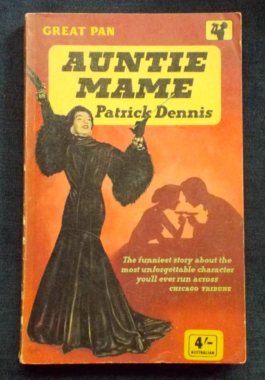
Auntie Mame: Patrick Dennis
$10.00The madcap story of Patrick's adoption at the age of ten by his zany, unconventional Auntie Mame. And life with Auntie Mame was never ever dull! Sparklingly witty, irreverently satirical, this 1955 novel manages to remain timelessly relevant in its cutting send-up of conformity and conservatism. Patrick reminisces his way through life with Mame in the glittering Roaring Twenties, surviving the Great Depression, her marriage and widowhood, World War II and into his first forays into romance. Based on a real Aunt. Cover shows Rosalind Russell in the 1958 film of the same name. -
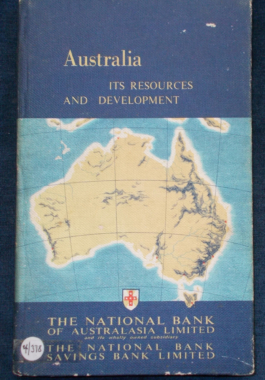 A real curio for history buffs and those who collect bank memorabilia. Remember when banks did give away all sorts of great things? Really good money boxes that you couldn't break into, and recordings of the Skippy theme song? The National Bank of Australasia Limited with its wholly-owned subsidiary the National Bank Savings Bank Limited offered this little volume covering all things resource and development: the Industrial Pattern of the rural, mineral, manufacturing and basic industries in each state making a special note of each state's particular strengths as well as Papua New Guinea; Water Resource, Transport and Power are also covered.
A real curio for history buffs and those who collect bank memorabilia. Remember when banks did give away all sorts of great things? Really good money boxes that you couldn't break into, and recordings of the Skippy theme song? The National Bank of Australasia Limited with its wholly-owned subsidiary the National Bank Savings Bank Limited offered this little volume covering all things resource and development: the Industrial Pattern of the rural, mineral, manufacturing and basic industries in each state making a special note of each state's particular strengths as well as Papua New Guinea; Water Resource, Transport and Power are also covered. -
 From the Carpenter's World Travels series. A fascinating look at life as it was here - in 1926! With 126 photographs and enticing chapter headings, such as: Life on the Sheep Station; The Three R's in Australia; Gold Diggings in Creek and Desert; Social Pests; Kangaroos and Danc9ng Birds and Mutton and Butter for London Tables. Illustrated with fabulous black and white photographs.
From the Carpenter's World Travels series. A fascinating look at life as it was here - in 1926! With 126 photographs and enticing chapter headings, such as: Life on the Sheep Station; The Three R's in Australia; Gold Diggings in Creek and Desert; Social Pests; Kangaroos and Danc9ng Birds and Mutton and Butter for London Tables. Illustrated with fabulous black and white photographs. -
 Australia is one of the richest countries, growing far more food that can be eaten, as well as a major source for minerals. To whom should Australia sell its food, minerals and energy? On what terms? How secure are Australia's relations with its major trading partners? How much does Australia's growth depend on immigration. These are just some of the themes covered in this book.
Australia is one of the richest countries, growing far more food that can be eaten, as well as a major source for minerals. To whom should Australia sell its food, minerals and energy? On what terms? How secure are Australia's relations with its major trading partners? How much does Australia's growth depend on immigration. These are just some of the themes covered in this book. -
 Thomas Stanley Hepworth (1916 - 1985) was a teacher, author and editor, responsible for the Australian Children's Newspaper, The ABC Children's Hour Annual Nos. 1–5 (1956–58, 1960–61), and The Australian Children's Annual Nos 6–8 (1963–65). There is plenty to amuse and educate in this thoughtfully-produced annual: stories, plays, information on how things were manufactured, hobbies and other countries; songs; riddles; crosswords and handicrafts. Contributors to this edition include Ruth Park, Rowena Farre, Denys Burrows, G.K. Saunders and 'The Argonauts'. In a day of limited television, these annuals were regarded as very instructive for young people. Illustrated with cartoons and black and white photographs of events in Australia and overseas.
Thomas Stanley Hepworth (1916 - 1985) was a teacher, author and editor, responsible for the Australian Children's Newspaper, The ABC Children's Hour Annual Nos. 1–5 (1956–58, 1960–61), and The Australian Children's Annual Nos 6–8 (1963–65). There is plenty to amuse and educate in this thoughtfully-produced annual: stories, plays, information on how things were manufactured, hobbies and other countries; songs; riddles; crosswords and handicrafts. Contributors to this edition include Ruth Park, Rowena Farre, Denys Burrows, G.K. Saunders and 'The Argonauts'. In a day of limited television, these annuals were regarded as very instructive for young people. Illustrated with cartoons and black and white photographs of events in Australia and overseas. -



